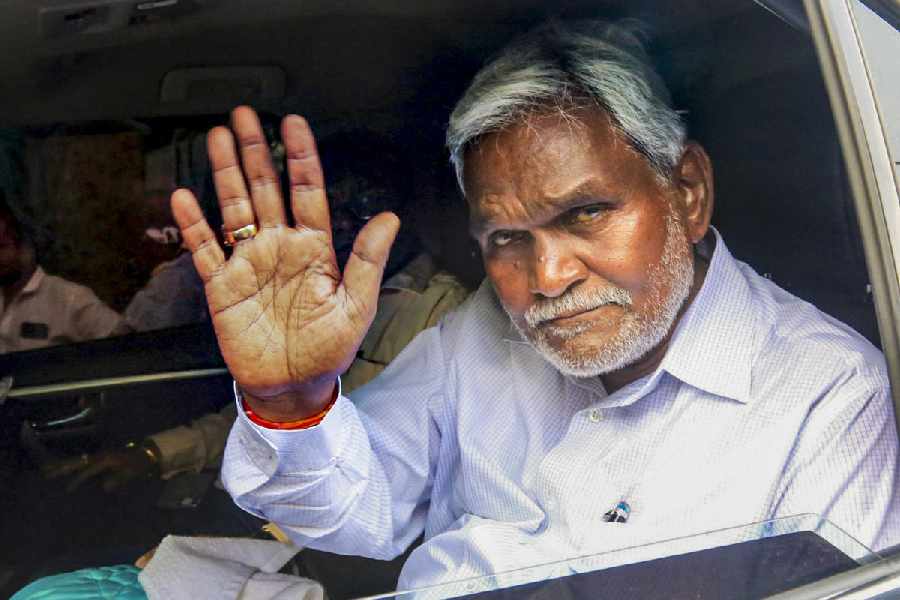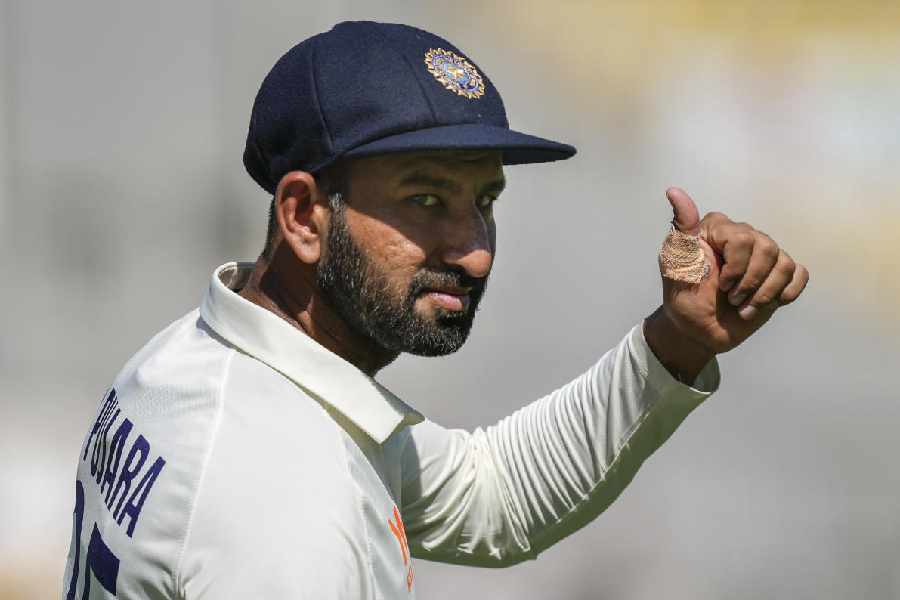 |
| Banjara meat |
Once upon a time, a severe drought hit Awadh. The Nawab was worried, for thousands of workers were toiling away, building the Bara Imambara. They had to be fed, for the work was hard and tedious. So his cooks came up with a dish for the workers that put together everything that was nutritious and filling. Meat and pulses were cooked in huge deghs over long hours. It was a meal in itself, and kept the labourers going. That was the birth of the khichada.
These days, I don’t get to eat the khichada very often, for few bawarchis cook this delicious dish. It is traditionally eaten on the day of Moharram but last month, when academician Zoya Hassan expressed a fervent desire to eat some khichada on Moharram, I realised that it’s become almost a rare dish. I couldn’t think of any restaurant offhand where she’d get her bowl of khichada.
 |
| Naga chilli garlic pork |
Some of my favourite dishes — from khichada to nihari and haleem — are getting rarer and rarer as the years go by. I suppose that’s because the recipes can be elaborate, and the dishes take long hours to cook.
Nihari, for instance, has to be cooked overnight. Meat shanks are sealed in a degh and cooked with roasted atta or besan, with all kinds of whole spices. Early next morning, the degh is unsealed — and its aroma wafts in the air, drawing people close to the degh. The chefs add some browned juliennes of ginger, chopped chillies and coriander leaves to the nihari, and the patrons go back fully sated.
Some of my friends cook haleem — a dish of cracked wheat, pulses and meat — at home. Another academic friend, historian Amar Farooqi, takes a shortcut for his haleem, choosing to put his mix through a blender instead of pounding it painstakingly for hours. In Delhi and other cities, you can get your haleem during Ramzan. You also find it at a few select places in Old Delhi. Bundu Mian, who sits in the same lane where the famed Karim restaurant is located, is my favourite. But outside the walled city, it’s indeed difficult to find a good haleem, nihari or khichada.
 |
| Nihari gosht |
That’s why I was happy to know that Fire at The Park has now included some difficult-to-get traditional dishes on its regular menu. It includes nihari, khichada and sangom kheer, which I ate at a Northeast festival once and instantly fell in love with. Cooked with Manipuri black rice, you don’t find this very easily in regions outside the Northeast. The menu also includes a dish called Banjara meat, which I’d had at a friend’s house many moons ago. I remember it was a delicious mutton dish that had been lightly cooked with spices.
For this dish, chefs at The Park marinade mutton chunks and shanks overnight in mustard oil with fennel seeds, onion seeds, mustard seeds, cumin seeds, fenugreek seeds, dried fenugreek leaves, carom, ginger, garlic, onion and dry red chillies. Then they cook the marinated mutton in a thick-bottomed pan.
Another old favourite of mine — now at Fire — is the Naga chilli garlic pork. I had some great Naga friends in the seventies and the early eighties, and they used to cook a mean pork with Raja chillies, arguably the hottest chilli you can ever get. Outside Nagaland House, you won’t find Naga chilli pork very easily in Delhi. But these days you can buy your Raja chillies from some select Northeastern stores.
Of course, I have always believed that you don’t get the genuine taste of a hot dish in a five-star hotel, which has to necessarily tone down the spices for its picky clientele. But I certainly laud The Park’s efforts to resuscitate some of these dishes which are disappearing from our lives. Let’s bring them back before it’s too late.
Khichada
 |
Ingredients (to serve 4)
3 pieces, mutton neck , 150ml mustard oil , 15gm whole garam masala , 200gm onions, 50gm ginger garlic paste, 150gm curds, 15gm red chilly powder, 20gm potlee masala (with black pepper, bay leaf etc) , 30gm moong dal, 30gm arhar dal , 30gm chana dal , 30gm urad wash, 30gm lal masoor, 50gm wheat grains, 10gm turmeric powder
Method
Heat mustard oil, add whole garam masala and allow it to crackle. Add sliced onions, sauté them till golden brown. Add mutton neck, fry it gently for 10-15 minutes. Add curds, red chilli powder, potlee masala, ginger garlic paste, and cook in a pressure cooker. Soak the wheat grains for 20 minutes in warm water. Boil all the lentils along with wheat grains, turmeric and salt. When the mutton neck is cooked, strain the gravy and keep it aside. Cool. Separate the meat from the neck. Add the strained gravy and meat from the mutton neck to the cooked lentils. Cook gently till the meat mixes with the dal. Top with chopped ginger, green chilli, coriander and mint leaves. Serve hot.
Sangom kheer
 |
Ingredients (to serve 4)
100gm Manipuri black rice , 1litre full cream milk, 100gm sugar l5gm cardamom powder , 50gm cashewnut, 50gm raisins , Ghee, for frying
Method
Wash the rice well, and cook it with milk till it’s semi thick, and keep stirring all the time to ensure the rice does not stick to the bottom of the vessel. When the rice is well-cooked, reduce heat. Add the sugar and cardamom powder. Remove from fire. Fry the cashewnuts and raisins in ghee till golden in colour. Let them cool, and add to the kheer










